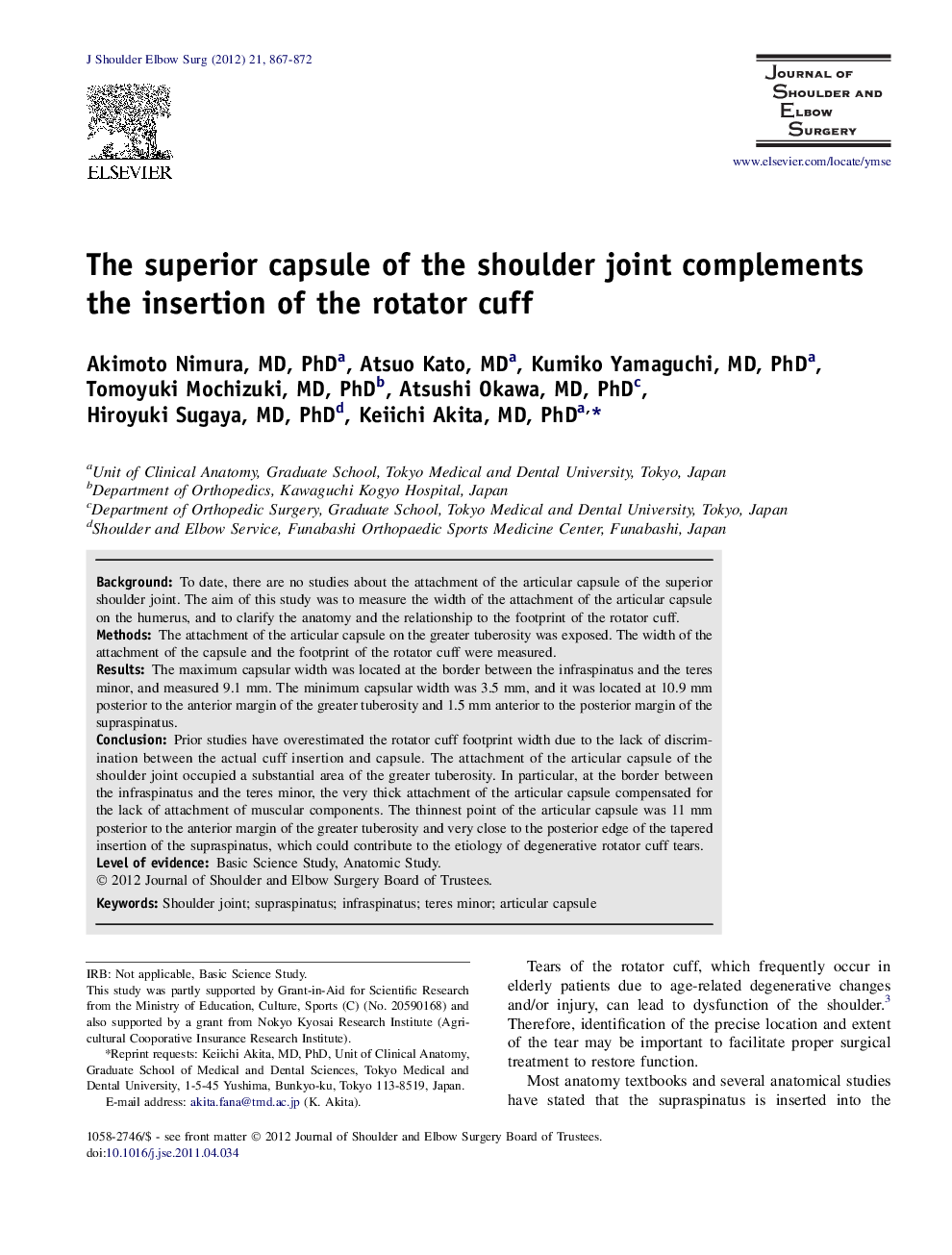| Article ID | Journal | Published Year | Pages | File Type |
|---|---|---|---|---|
| 4074291 | Journal of Shoulder and Elbow Surgery | 2012 | 6 Pages |
BackgroundTo date, there are no studies about the attachment of the articular capsule of the superior shoulder joint. The aim of this study was to measure the width of the attachment of the articular capsule on the humerus, and to clarify the anatomy and the relationship to the footprint of the rotator cuff.MethodsThe attachment of the articular capsule on the greater tuberosity was exposed. The width of the attachment of the capsule and the footprint of the rotator cuff were measured.ResultsThe maximum capsular width was located at the border between the infraspinatus and the teres minor, and measured 9.1 mm. The minimum capsular width was 3.5 mm, and it was located at 10.9 mm posterior to the anterior margin of the greater tuberosity and 1.5 mm anterior to the posterior margin of the supraspinatus.ConclusionPrior studies have overestimated the rotator cuff footprint width due to the lack of discrimination between the actual cuff insertion and capsule. The attachment of the articular capsule of the shoulder joint occupied a substantial area of the greater tuberosity. In particular, at the border between the infraspinatus and the teres minor, the very thick attachment of the articular capsule compensated for the lack of attachment of muscular components. The thinnest point of the articular capsule was 11 mm posterior to the anterior margin of the greater tuberosity and very close to the posterior edge of the tapered insertion of the supraspinatus, which could contribute to the etiology of degenerative rotator cuff tears.
